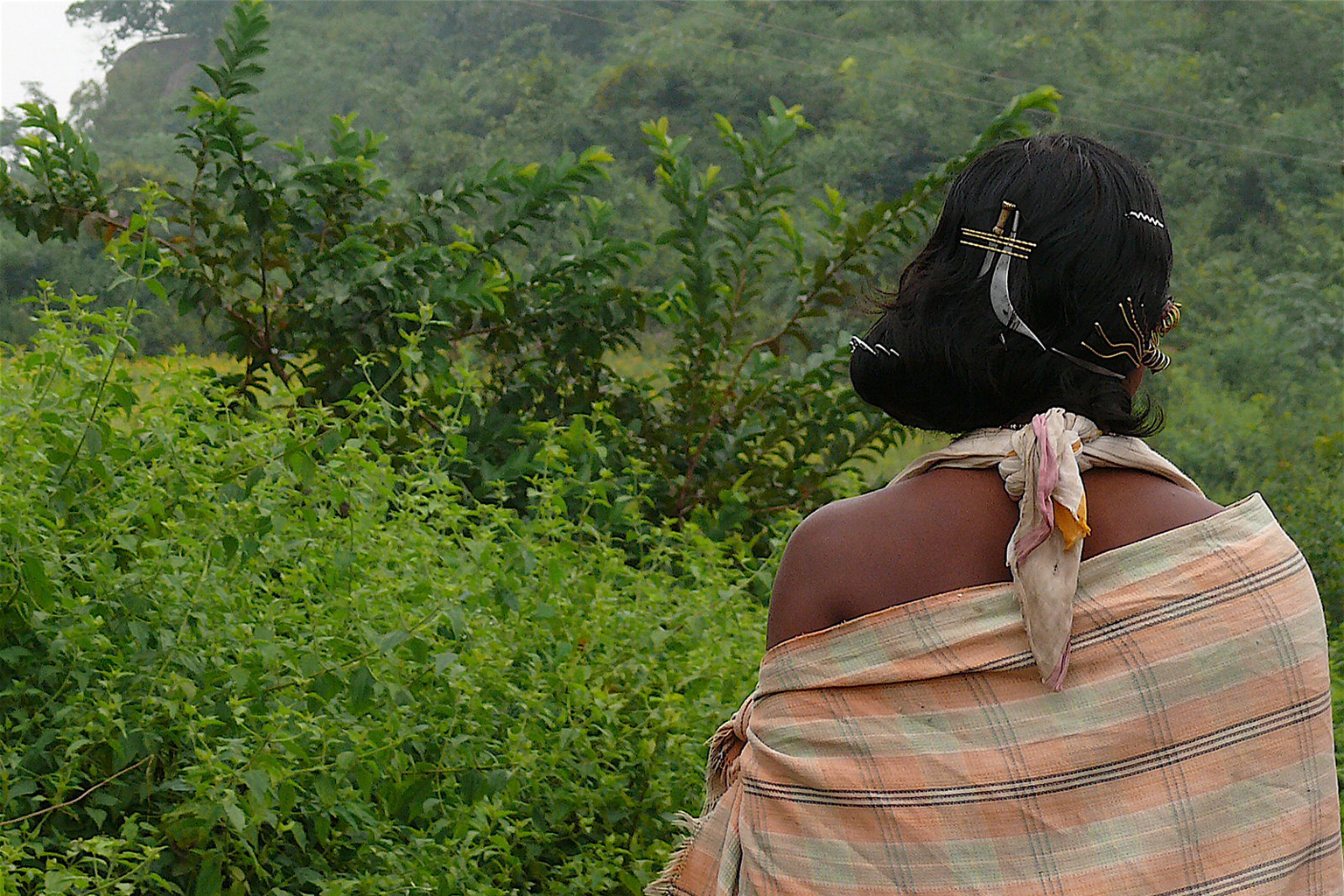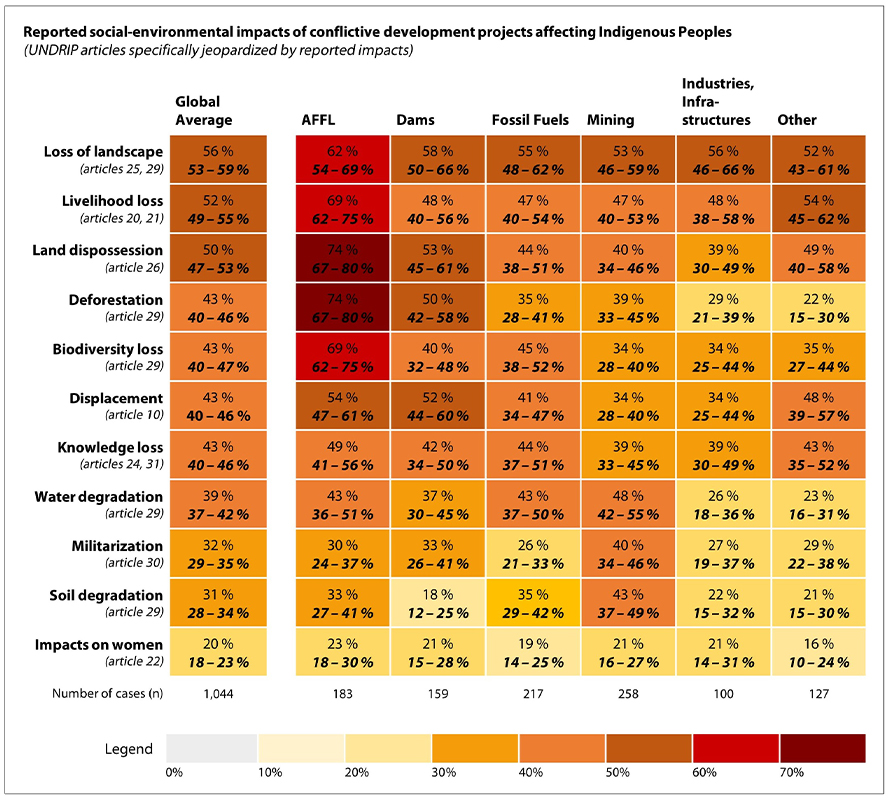- Roughly one-third of all environmental conflicts documented in an online crowd-sourced atlas affect Indigenous peoples, researchers have found.
- The mining of transition minerals has been linked to hundreds of allegations of abuse with multi-faceted impacts on the environment and communities, according to a new report.
- Some Indigenous organizations are calling for Indigenous rights and free, prior and informed consent to be central to the transition to a green economy in light of the global rush to secure clean energy minerals.
Indigenous peoples are disproportionately impacted by extractive industries and mining for clean-energy minerals is linked to a myriad of abuses, according to new research.
Indigenous peoples are affected in just over a third of all environmental conflicts documented in the crowd-sourced data from Global Atlas of Environmental Justice, EJAtlas, which was analyzed in a research article published June 7 by Science Advances, an open-access scientific journal. Mining is the top sector involved. Loss of landscape, livelihood loss and land dispossession were the most frequent impacts across the 1,044 conflicts affecting Indigenous peoples that researchers analyzed for their study.
“The scale of social-environmental burdens faced by Indigenous communities shows that these are not singular cases of bad practice and project implementation, but rather systemic features of how the world economy operates,” said article co-author Arnim Scheidel, a researcher at the Autonomous University of Barcelona’s Institute of Environmental Science and Technology (ICTA-UAB) who is also a member of the EJAtlas coordination group.
The study found 740 Indigenous groups affected, with Quechua people in South America at the top of the list, but the authors said that number is undoubtedly higher. The dataset is incomplete, with noted gaps for Central Asia, Russia and the Pacific. Impacts are also more far-reaching than those analyzed. EJAtlas also has potential reporting biases and does not guarantee all data to be accurate or updated.

The study assessed 11 environmental and social impacts linked to violations of specific articles of the United Declaration on the Rights of Indigenous Peoples, UNDRIP, because of the declaration’s importance to Indigenous communities. The authors hope their research can help support policy development, advocacy, and activist campaigns.
“Extractive and industrial development projects often create landscapes of violence in which Indigenous communities are the first casualties and the last line of defense. With this study, we wanted to contribute to bring global visibility to these issues,” Álvaro Fernández-Llamazares, another article co-author and ICTA-UAB researcher, told Mongabay.
Indigenous communities are now also confronted with increasing pressure by the state and energy sector to mine their lands in response to climate change and its impacts. Most proposals for a global shift away from fossil fuels entail a spike in demand for some 30 metals and minerals – including lithium, cobalt, nickel and copper – often referred to as transition, critical or clean-energy minerals, used in electric cars, solar panels and wind turbines. More than half of all transition mineral mining projects are on or near Indigenous lands.
“What is very clear is that pressure to mine for more minerals has been intensifying in the last year or two,” said Caroline Avan, Natural Resources Researcher at the Business & Human Rights Resource Centre. “There will be a temptation to cut corners on respect for environmental regulations and human rights when projects are fast-tracked.”

Related reading: Will clean-energy minerals provoke a shift in how mining is done in Africa?
The Business & Human Rights Resource Centre has documented 510 allegations of abuses associated with the mining transition minerals between 2010 and 2022, including 65 new allegations in 2022 alone, according to the ‘Transition Mineral Tracker: 2022 Analysis’ report published in June 2023. South America accounts for more than half of all allegations, 82% of which are associated with more than one impact, and impacts on local communities account for more than half of all 1,468 documented impacts.
The Las Bambas copper mine in Peru was the subject of more allegations both in 2022 and overall than any other project and it illustrates the multi-faceted nature of environmental, community and other impacts highlighted in the new report. The Las Bambas case is also part of a global trend of growing protest and legal actions by communities, said Avan, lead author of the report.
“Complaints often have to do with land rights not being respected and environmental abuses around the mine,” she told Mongabay, noting that blockade and other protest actions have periodically halted production.
MMG Ltd, a firm two-thirds owned by the Chinese state-owned China Minmetals Corporation, operates the Las Bambas mine, which began commercial production in 2016. Communities have highlighted land sale irregularities, water pollution and lack of consultation among other local concerns over years of protests, along with a failure to uphold commitments and agreements established in stop-and-start dialogue processes. Some communities have also pushed at different times for compensation and benefit-sharing, including a proposal in 2022 by several communities interested in becoming partners in the mine.
“They have said that they want to have a seat at the table and derive some financial stability,” said Avan. “That’s also illustrative of solutions being put forward by Indigenous communities.”

MMG’s Peruvian office did not immediately respond to Mongabay’s request for comment on the allegations and community demands. On its website, the company highlights a commitment to human rights and “strong relationships with over 80 communities” in the case of the Las Bambas mine.
The Transition Minerals Tracker report includes a series of recommendations for companies, investors and governments. One recommendation in particular is also a top priority in policy advocacy, corporate engagement and Indigenous community capacity-building by the SIRGE coalition, an acronym for Securing Indigenous Peoples’ Rights in the Green Economy.
“We are focusing on the urgent need to operationalize free, prior and informed consent,” said Kate Finn, executive director of First Peoples Worldwide, one of five organizations that comprise the Indigenous-led coalition. “We can’t move forward to actually solve for climate change unless there are Indigenous peoples in every room where decisions are made.”
Free, prior and informed consent is the cornerstone of international human rights standards like the U.N. Declaration on the Rights of Indigenous Peoples (UNDRIP) and the International Labor Organization Convention 169 (ILO Convention 169). Though more than one hundred countries have adopted UNDRIP, this standard is not legally binding. It is rather an instrument to interpret national laws.

The SIRGE coalition and other organizations have been calling for Indigenous rights to be secured and respected in any climate change solutions, including a transition to a green economy. They are also concerned that a major expansion of mining in and near Indigenous lands is increasingly being taken for granted as necessary across the private, public and even non-profit sectors.
“I’m seeing that a lot of greenwashing is happening these days, and we want to address that. It’s vitally important to challenge the narrative of the mining industry, because the mining industry is trying to portray this – the mining for transition minerals – as the ultimate climate change solution,” said Galina Angarova, executive director of Cultural Survival, another SIRGE coalition member organization.
Indigenous activists at the U.N. conference on Indigenous Issues in April also highlighted free, prior and informed consent as a framework for partnership with clean energy mining projects. This includes options for equitable benefit-sharing agreements or memorandum of understanding, collaboration or conservation when a mine is agreed to be established to propel the green economy.
“There’s a real narrative around urgency and I think that’s important. But we don’t want to urgently get to the same place we’re at and call it green,” Finn told Mongabay. “If we’re going to solve things differently, we have to have everybody at the table.”
Banner image: Indigenous activists at COP25 hold a banner proclaiming “Indigenous justice is climate justice.” Image by John Englart/Climate Action Network via Flickr (CC BY-SA 2.0).
Related listening from Mongabay’s podcast: A conversation with Cultural Survival’s Daisee Francour and The Oakland Institute’s Anuradha Mittal on the importance of securing Indigenous land rights within the context of a global push for land privatization. Listen here:
Latin America had the most attacks on environmental defenders in 2022, says report
FEEDBACK: Use this form to send a message to the author of this post. If you want to post a public comment, you can do that at the bottom of the page.
